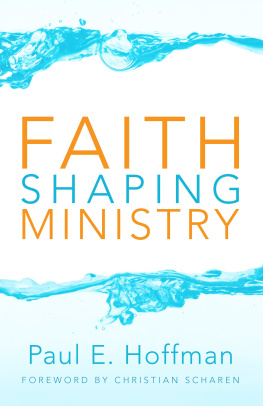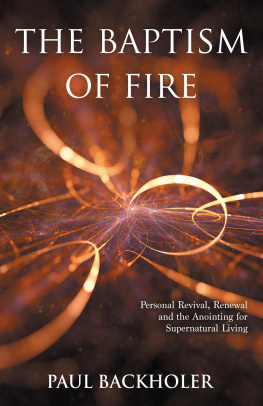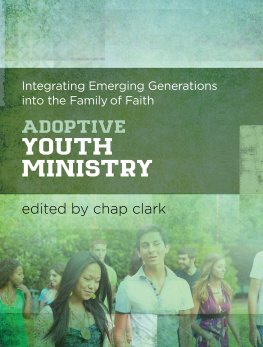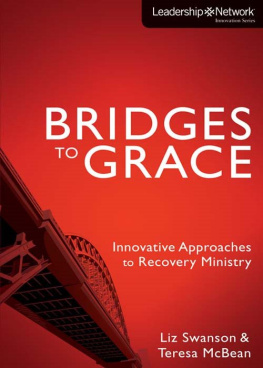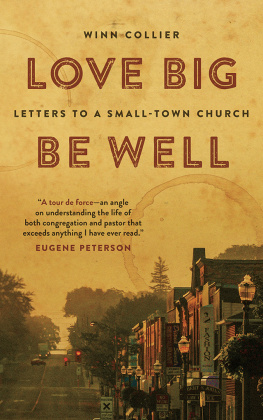Paul E. Hoffman
Foreword by the Reverend Dr. Christian Scharen
A Word about The WAY
B efore unfolding the story of how offering new Christians the gift of holy baptism has changed our congregational life, it will be important to give a brief overview of the process itself. We call this year of intentional faith formation The WAY.
For two decades, visitors, friends, potential members, unbaptized Christians, and people seeking a deeper spiritual life have gathered together on Sunday evenings for a meal and Bible study. From October through Pentecost, all people who are inquiring about faith and life in our parish are directed toward this process. For some it is their very first encounter with Christians and Christianity. For others, perhaps active Lutherans all their lives, it is an opportunity for a faith sabbatical. Most people fall somewhere in the middle of these two descriptionspeople for whom baptism took place long ago and far away. For reasons as varied as the people themselves, their baptismal life never went much beyond the day that the sacrament was administered.
Our parishs commitment to the first group, the unbaptized, grew out of the realization that our parish was no longer growing or even self-sustaining. The thousands of members in 1960 who were worshiping weekly had diminished to less than three hundred in the early 1990 s. We were no longer repopulating the parish in the usual Lutheran waysthrough birth and through immigration from northern European nations. Combine that with ministering in the city of Seattle, where the vast majority of the population when asked will list None as their religious preference, and you have a rich mission field for forming faith and bringing people to the waters of baptism. In what has turned out to be a tremendous gift of the Holy Spirits leadership among us, we chose to do this in a thorough and intentional way following the pattern of the faithful that stretches all the way back to the fourth century. Grace, wisdom, and care prevailed in our decision-making, and the congregation and its leaders resisted the option of baptism on demand. Clearly, offering the sacrament with little or no prior formation in the current religious environment was neither pastoral nor effective in shaping the lives of new Christians.
As our new process of faith formation began in the early nineties, there simply werent people lining up at our door to be baptized. So in an effort to have a viable, sustainable group with which to work, even those who would ordinarily have simply transferred in were given the opportunity to participate in the yearlong process of The WAY, and strongly encouraged to do so. In the early days of our practice, the men and women who would ordinarily have spent an hour or two in Pastors Class were gifted with an entire year of Bible study, fellowship, and ritual welcome instead. Where they may have received a tour of the church and a box of offering envelopes, they received a renewing and life-giving year of welcome grounded in the Scriptures.
The great majority of people to whom we minister in The WAY are people who had been baptized as children, or perhaps as a result of a spiritual awakening in college or early adulthood, but had wandered away and lost interest in discipleship in Christ for one reason or another. Some were coming to us requesting baptism for their own children. Some came at a time of personal crisisa death in the family, the loss of a job, a life-threatening illness. Some came looking for a place to have a wedding and received instead a year of formation in faith and a congregation in which to ground their marriage.
But the heart of the matter is that those who gathered and were invited to this substantial process of faith formation reflected the complexion of our neighborhood itself. They were men and women of a variety of backgrounds, with a variety of faith experiences, triumphs, challenges, and disappointments. They were bold or timid, well grounded in faith or hanging on by a thread, married or single, gay or straight, certain or deeply, deeply questioning.
The process and narrative of The WAY is thoroughly recounted in the first volume of this series, Faith Forming Faith. A quick review of it will assist you in making fuller use of the details provided in the present volume on how this process of bringing people to baptism, its affirmation, and beyond has shaped all of parish life.
Shortly after Easter, staff members begin to identify people like those described above and organize them into informal groups for the coming falls process. A couple of social events, perhaps combined with a Bible study in the style of The WAY, are sometimes hosted in the summer months, but it is in October that the process begins in earnest.
On Sunday evenings in the fall, newcomers gather with current parish members for a fellowship meal and a small group Bible study from : to : p . m . Eventually each of the newcomerscalled candidates early on in the processis matched with a parish member who will walk with them throughout the course of this year as a sponsor. This sponsor will be by their side throughout the season of small group Bible studies, at the fellowship meals, for rituals that punctuate the process from time to time at Sunday liturgy, andof courseat the time of their baptism or affirmation of baptism. In our case, baptism and affirmation take place at the Easter Vigil, a glorious and beautiful liturgy that is held the night before Easter, the ancient churchs traditional time to welcome new Christians through the sacrament of baptism.
The meals served on Sunday evenings are well planned and robust; they are unhurried opportunities for conversation and welcome. These meals are themselves a significant part of the process of sharing the Christ-like gifts of welcome and hospitality.
Dinner is followed by more foodthis time the participants feast on the Word. Gathering in groups of six to ten persons, and led by a lay Bible study leader, the small groups use the mornings preaching text from the Bible as their primary source of reflection. This is not the sort of Bible study in which everyone is to agree upon what this text means. Instead, along with the mornings sermon, it is used as a springboard from which people are encouraged to bring their questions about faith: Who is Jesus? Why do people suffer if God is love? Do I have to believe that Christ is the Son of God to belong here? What do you mean, resurrection of the body?
The pastors are not participants in the small group Bible studies. The groups are completely participant-directed and lay-led. The inquirers are accompanied by their sponsors, and the entire group is led by a catechista lay Bible study leader. Because of the style of the studies, the best-qualified lay leaders are not those who are biblical experts, but those who can read social dynamics well and have a non-anxious presence. If youve done the math, youve already deduced that there are more seasoned Christians than newcomers in each small group. With all these active parish members involved in the faith formation process, you can also probably already see why forming faith has had a huge role in shaping ministry.
Throughout the course of the newcomers year of formation, they are often invited to come before the congregation, along with their sponsors, for welcome and prayer. Gathering around the font during the Sunday morning service, they learn by seeing for themselves that Christianity is not a private faith but a corporate one. The community is interested in their presence among us and routinely recognizes and prays for them as a sign of their inclusion into the body of Christ.

